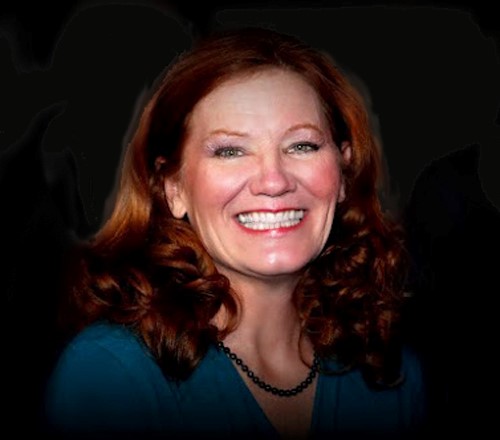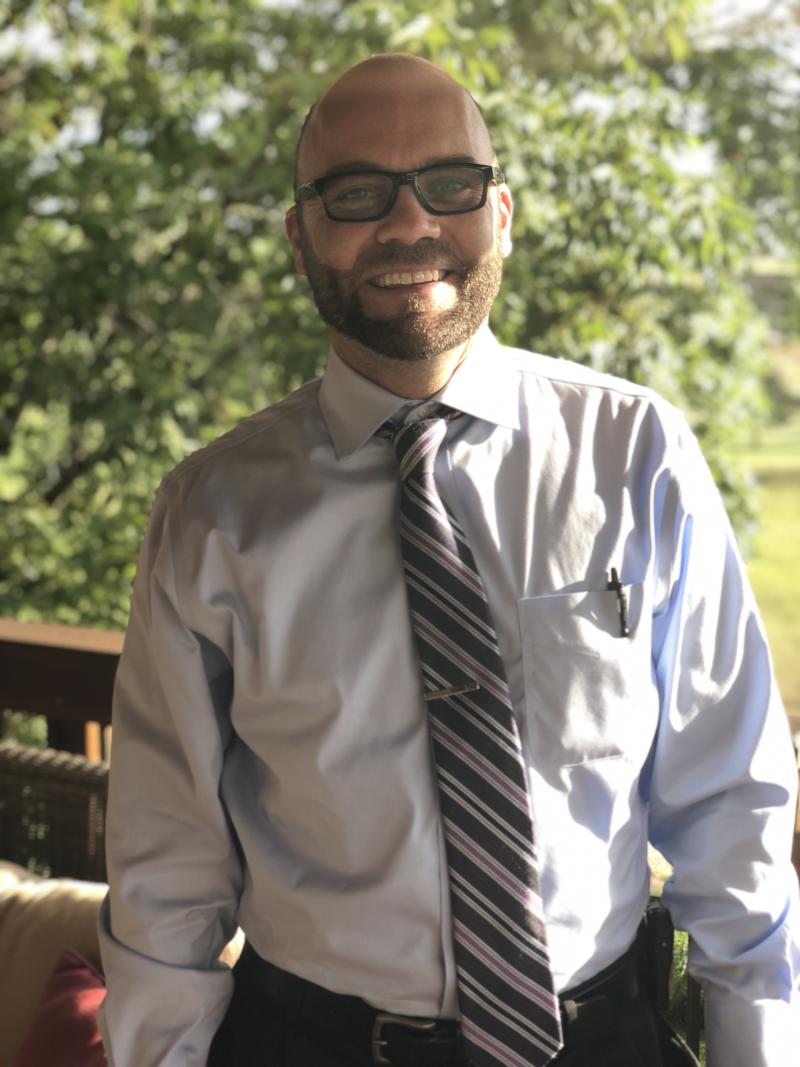The earliest traceable mentions of diabetes came from an ancient Egyptian papyrus that speaks of a disease that caused rapid weight loss and frequent urination. To anyone living with T1D those symptoms sound all too familiar.
 Breakthrough T1D advocate and Colorado Community board member Gail Devore learned she had T1D when she was a child.
Breakthrough T1D advocate and Colorado Community board member Gail Devore learned she had T1D when she was a child.
“I had been feeling not-well for a while. I was losing weight, needed to pee all the time, and could not get enough water into my body. I recall begging to go to the drinking fountain and gulping as much water as I could since I was so incredibly thirsty. My dad knew something was wrong and took me to our family doctor. Doc did a regular exam, drew some blood, and told my parents to bring me back the next morning when he’d do a 4-hour glucose tolerance test.”
Diagnosed on February 14, 1972, Gail recalls the doctor telling her parents she would not live to see 40. With no resources presented to them, and only being educated about insulin dosage, the still-mysterious “exchange diet” and foods to eat and avoid, Gail’s Dad did his own research, finding different doctors and making decisions that Gail attributes to her current good overall health.
With treatment methods that included a fixed amount of insulin once a day and management that was limited to urine testing for sugar, lab work for blood draws took at least 24 hours for results. It would be another 10 years before at-home (devices for testing) blood sugars were released to the public, and “even then, we had to take it to the doctor to get a better picture of what was going on. It was the size of a portable typewriter and required a huge blood sample and water to rinse it off. That didn’t get used very often. A1c tests started about that same time. My first one was about 12%. Until about 5 years ago, my A1c stayed between 7 and 8%.”
In the decades since, Gail points to significant advancements that include CGMs w/ Follow (invented by Nightscout two years before Dexcom’s follow.) The CGM allowed Gail to “be alone, go hiking solo, go skiing without someone around that knew about diabetes and hypoglycemia. Currently using DIY Looping, Gail no longer has to make constant decisions about insulin and carbs. Her ”system does it all,” and, thanks to looping, her A1c has been under seven for the last five years.
With memories of volunteering with Breakthrough T1D since the late 70’s or early 80’s, Gail has always been involved in some way. Her parents were also very active and made sure she was involved in youth activities with the local chapter – through which she made life-long friends!
 Patty Senker, a Breakthrough T1D volunteer and supporter in Kamas, Utah (a small town east of Park City) was diagnosed at 28 in 1981.
Patty Senker, a Breakthrough T1D volunteer and supporter in Kamas, Utah (a small town east of Park City) was diagnosed at 28 in 1981.
“My symptoms were extreme thirst, frequent urination, weight loss, and worsening vision. I had seen a short article in the newspaper about the signs of diabetes, and went to my eye doctor primarily because I was frightened about my vision getting worse so quickly. My eye doctor said my blood glucose was high, but that probably wasn’t diabetes because I had granola for breakfast. That didn’t sound like a good answer to me; so I went to a local doctor who did a fasting glucose test, and I was officially diagnosed with T1D. My husband, who was very concerned, insisted I go to a diabetes specialist at a teaching hospital. I made an appointment at the University of Pennsylvania Hospital with a specialist there, and began my T1D journey.”
Sent by their doctor, Patty and her husband went to the local hospital in Bryn Mawr to get training on diabetes care. “I was given a sheet on food exchanges, explained how to use them, and was given a strict diabetes meal plan to follow. In my previous life, I had rarely eaten breakfast; and now I had to eat three very well balanced meals a day and was told to carry snacks with me if I felt my blood sugar was falling. Fortunately, I had taken a comprehension nutrition course in college, so I understood the difference between simple sugars and complex carbohydrates and their effect on the body.”
When Patty started insulin therapy, she used one 13-unit shot/day of long-acting Lente pork insulin. (Regular or quick-acting insulin wasn’t invented yet.) “Chemstrips had just been developed for BG testing, instead of testing for sugar in your urine. You put a drop of blood on a strip, waited 30 seconds, and then compared the final color on the strip to a color chart on the jar of the strips to give you an approximate BG value. A glucagon kit was available in case of hypoglycemic emergencies. “My physician used the A1C test very early in my treatment since the university (where he was affiliated) was an integral part of the A1C invention.”
In the late 1990’s, she went to multiple daily shots of regular and long-lasting insulin, and switched to a pump in 2002. “It was life-changing,” said Patty.
“At that point in my T1D life, I could no longer recognize low blood sugars, and the advent of BG monitors that could give you a value in five seconds was revolutionary. In addition, my pump allowed me to instantly turn off my insulin if I was dangerously low, or add more insulin if I needed a boost. Patty also uses use the Dexcom G6, sending an alert to her phone if she’s too high or too low. “It’s a great device when you’re playing a 4-hour round of golf!” Noting that the Dexcom’s readings haven’t been very accurate for her, Patty hopes her contributions to JDRF research might improve its accuracy.
Both Patty and her husband grew up in Philadelphia, where Breakthrough T1D first began, so knew of its existence and the Lee Ducat story. While her in-laws regularly attended Breakthrough T1D gala’s through friends who had a child with T1D, Gail and her husband didn’t get involved with Breakthrough T1D until their children went to college. They quickly discovered the uplifting energy and the promise to find a cure for diabetes in Breakthrough T1D, which continues to inspire their annual generous financial support of Breakthrough T1D.
 One month prior to his 5th birthday, Breakthrough T1D advocate, walk team captain, local board member an incoming President of the Colorado Community Board John Moore was diagnosed with T1D. John remembers being in the hospital for a few days, playing foosball with his dad, (who happened to be in medical school at the time,) and beginning to take injections.
One month prior to his 5th birthday, Breakthrough T1D advocate, walk team captain, local board member an incoming President of the Colorado Community Board John Moore was diagnosed with T1D. John remembers being in the hospital for a few days, playing foosball with his dad, (who happened to be in medical school at the time,) and beginning to take injections.
“With the exception of what we learned at the hospital, I don’t recall additional education resources,” said John. “I am sure that my father leveraged the resources that he had available through medical school. My mom is a meticulous planner, and very Type A, so I have little doubt that she read everything available, and I do recall her quickly becoming an expert in carb counting.”
John’s initial insulin was Pork insulin, and he ‘checked’ his blood glucose via urine tests. “Eventually I began using a strip that my parents would cut into three strips to save money, and I would put a drop of blood on the strip, wait one minute, wipe the blood off, wait another minute and then compare the color on the strip to a bottle that would give me a general range, such as 120-180. The lancets were big and thick and the spring-loaded apparatus that the lancet went would be well suited for a medieval weapons museum.”
Recognizing that he had it better than those who didn’t have insulin over 100 years ago, or who had to boil and sharpen syringes, John notes how far treatment has come in the four decades he’s lived with T1D.
“I have had every iteration of Dexcom, since the initial version. Dexcom’s accuracy, quality, length of time for sensors, and ability to stay on your skin now, is a night and day comparison from where it came from. John also notes the Tandem/Dexcom integration. “While not a closed loop, and certainly not a cure, this type of technology will be instrumental in decreasing the number of complications that people diagnosed in the last decade have. There is plenty of room for enhancements, but where we are at now, is similar to what I only dreamed of nearly 40-years ago.”
Since it’s founding over 50 years ago, Breakthrough T1D has impacted and influenced every advancement in T1D management and treatment. In the coming years, Breakthrough T1D will continue to lead the way in finding cures for type 1 diabetes and improving the lives of those with T1D until cures are discovered.